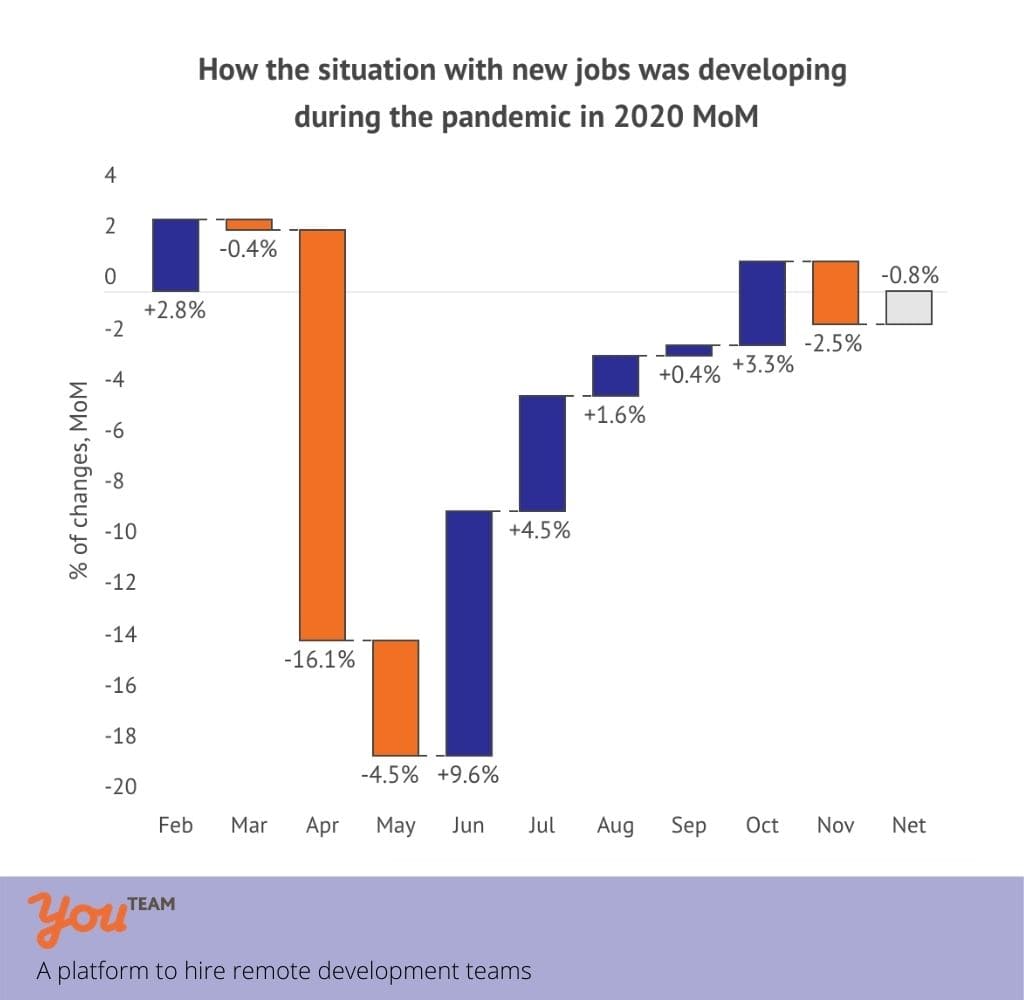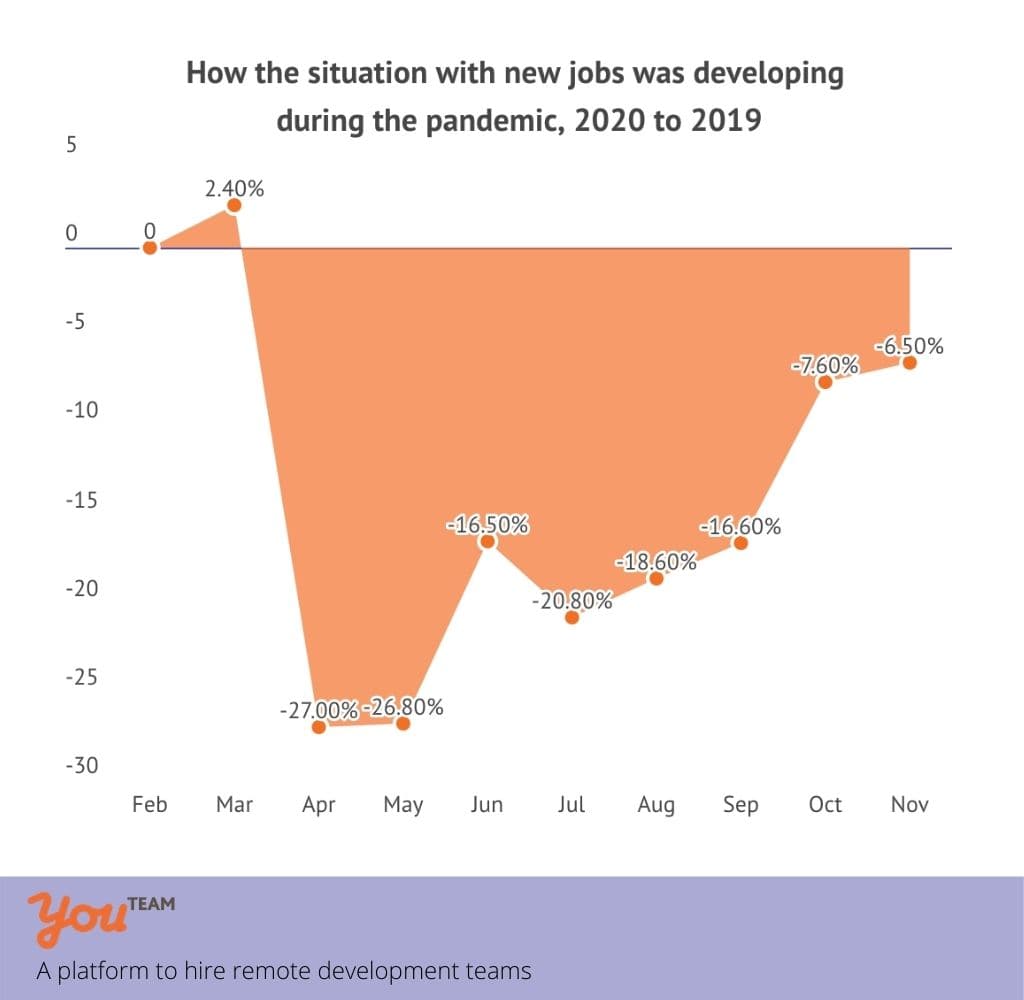What happened to the job market in times of COVID-19? (based on the 2020 monthly reports by Glassdoor)
2020 was a difficult year not only for the US but for the world’s economy. Apart from the devastating influence on humans’ health and lives, COVID-19 was sort of a dark swan that destabilized a common way of things and brought total uncertainty on every level.
As the year is almost over, we decided to take a close look at how the situation in the US job market was developing during the pandemic and make some predictions for 2021. This data is interesting not only because it illustrates the readiness of the companies to hire new employees, but the overall health of the economy, and therefore its potential growth and progress.
As we remember, the lockdowns in the USA was established around March 2020, with the COVID-19 becoming a real threat earlier, in late January. The infographic below is based on data published by Glassdoor and shows how the pandemic affected the volume of new job postings on their website, where February was a time for first signs of the hiring freeze, and spring was definitely a time of uncertainty, while summer was the time of hope.


There were 16.1% fewer job openings in April 2020 in line with March 2020. In May, this number decreased by 4.5%, with even fewer companies ready to hire employees. In June, with the pandemic slowing down, the situation started stabilizing and the number of job postings started to grow, by 9.6%.
The growth of the number of job opportunities continued till September 2020. Nevertheless, numbers didn’t reach the last year or even pre-pandemic rates in the current time of the year if we look at Glassdoor’s stats.
On the chart below, 0-axis represents the hiring level of 2019, so that we can see how 2020 was different compared to the same period of the previous year.


According to the Bureau of Labor Statistics, released on November 10, 2020, October’s unemployment rates went down in 37 states compared to only 8 states where this rate went up.
It’s easy to understand that after the job market slowly gained strength in summer, the possibility of new lockdowns in winter and the accelerated speed of coronavirus spreading made companies change their hiring plans. According to Glassdoor, in November, there were fewer jobs published than in summer or at the beginning of autumn.
The development of the situation in a job market will depend on the success of the anti-COVID vaccine. But in general, experts predict 2021 become one of the strongest years in terms of growth in the job market. Many industries will recover and complete all the job losses from 2020 by the end of 2021. As a result, unemployment rates are expected to decrease as time passes. At the same time, according to McKinsey, there’s a group of industries that will need five and more years to get back to the pre-pandemic stage. Most of them are represented by small businesses.
The bottom line
The first wave of COVID-19 and total lockdown became a shock for the US economy. More than 20% drop in job openings in just two months time is a very accurate reflection of that period. A 5-months positive tendency that follows a shock period gives hope for recovery. But the pace of it is not so fast and make it clear that we will be dealing with the consequences of a pandemic for a few years at least. Experts predict a full recovery by the end of 2021-2025 depending on the industry. In case the vaccines are successful.





